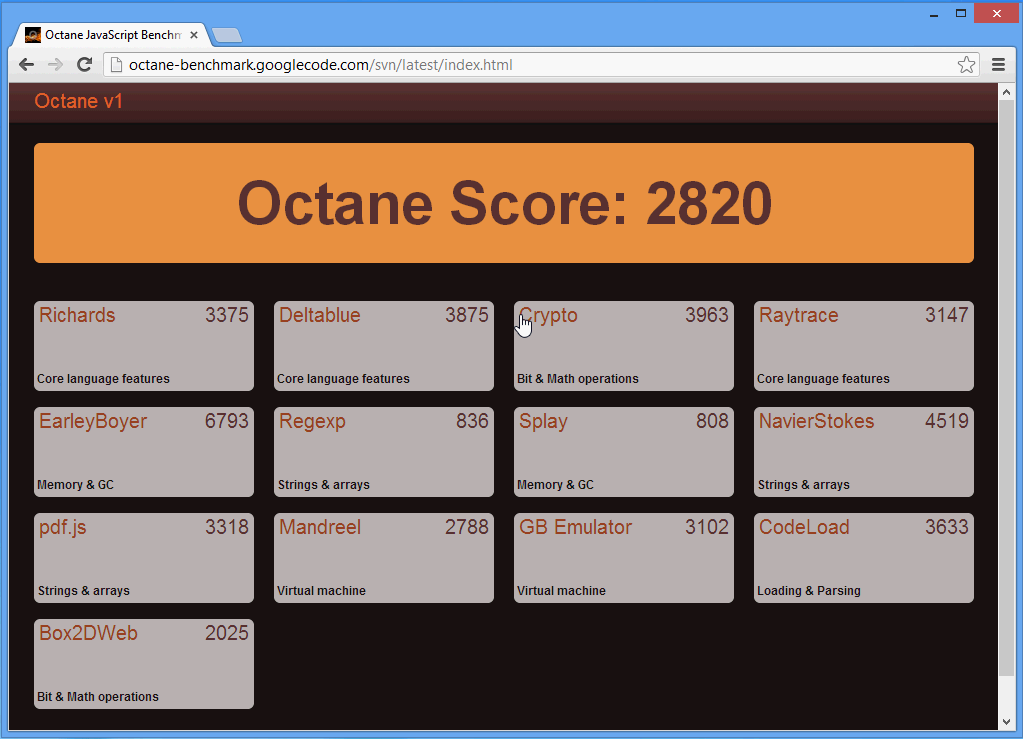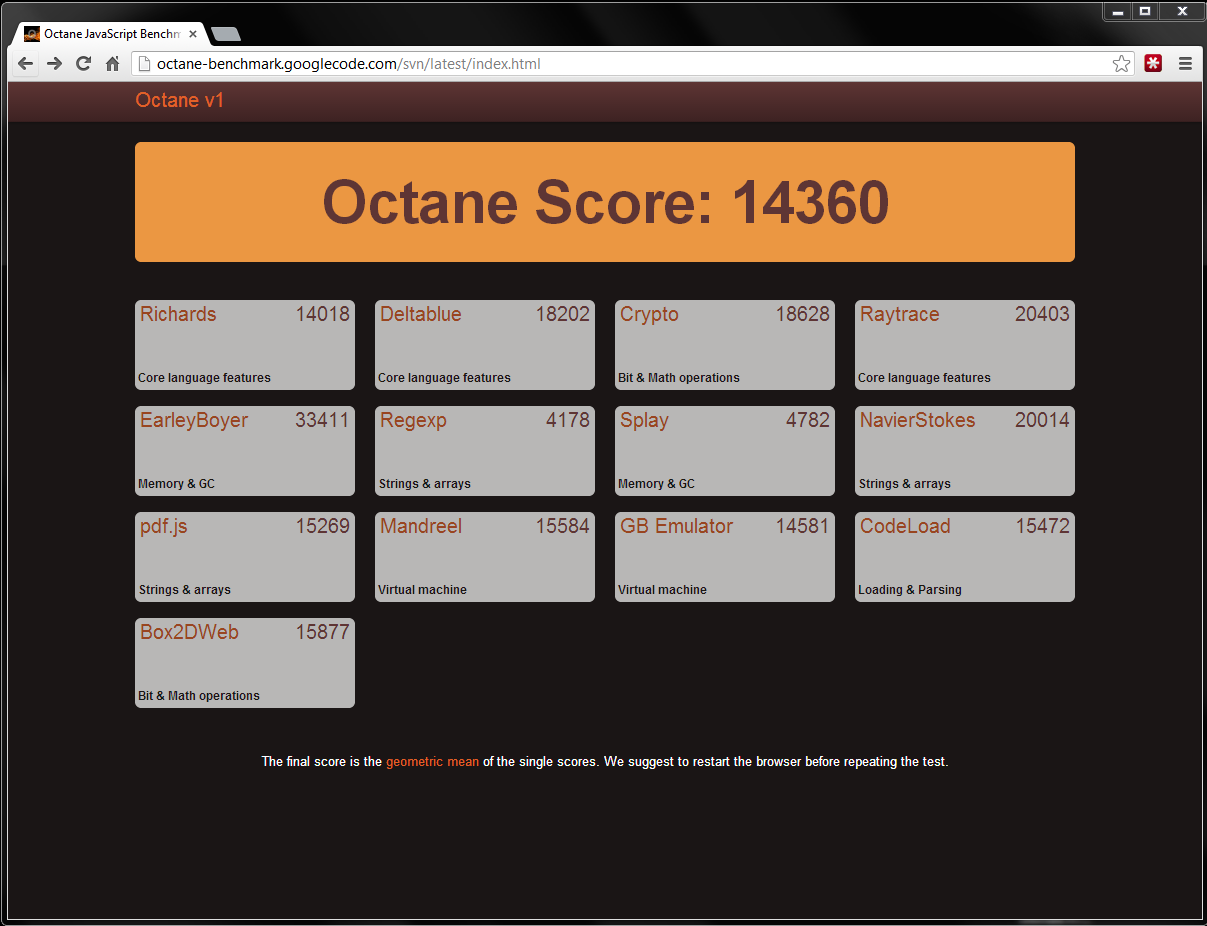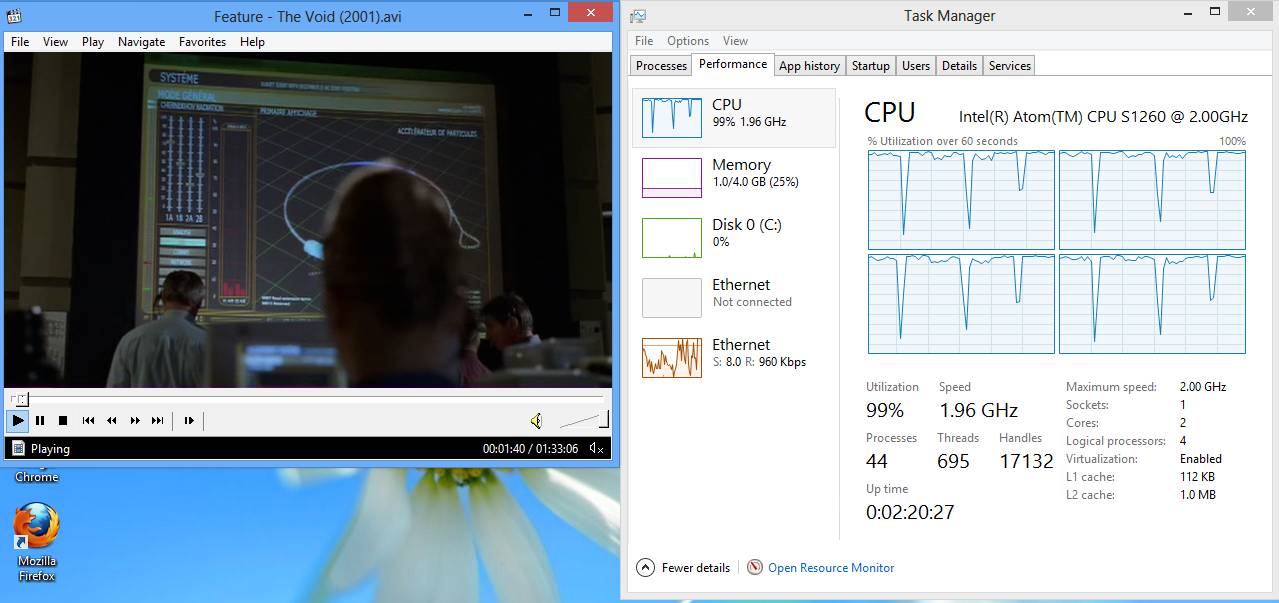Original URL: https://www.theregister.com/2013/05/14/intel_centerton_review/
Intel Centerton server-class Atoms: How low can you go?
Reduced-power virtualisation - take that, ARM
Posted in Systems, 14th May 2013 10:24 GMT
Review In late 2012 Intel launched Centerton: the first in its new line of Atom-based server processors. Hoping to cut ARM's invasion of the data centre off at the pass, these low-power CPUs are targeted at an emerging "Metal as a Service" movement that sees a return of unique workloads to individual processors.
I've finally gotten my grubby little mitts on one in the form of the X9SBAA-F and have run it through the wringer to see how it stacks up.
Power and environmentals
Supermicro provided the unit in the cute 101i mini-ITX chassis. This particular motherboard and chassis was my idea in the first place; Supermicro showed me its new "display computer" based on this chassis, but for various reasons I was far more interested in the idea of an IPMI-enabled microserver in a chassis with a VESA mounting kit. Ultimately, I am left questioning the combination.
I like the chassis rather a lot; a mini-ITX core-series motherboard in this thing would be the sort of widget I'd buy in bulk. The Centerton S1260 has a max TDP of 8.5 watts; the whole system, when redlined, doesn't hit 20W.
But the power supply for the chassis is a 60W efficiency level IV device. This is wild overkill and can lead to losing as much as 20 per cent of the power as heat. Clearly, these new microservers will require some rethinking to deal with in bulk.
Fortunately, the chassis itself takes DC power from an external adapter; this makes using a larger, more efficient power supply to handle multiple units easier.

How to train your dragon ... Peter is evicted from his
home while his heat lamps are used for testing
Supermicro claims an operating temperature range of 0 to 60°C for the motherboard on its product page; believe it*. I tossed it under two of my bearded dragon's heat lamps until it was somewhere around 63°C and it worked just fine throughout all of my tests. This is a passively cooled processor and I disabled the sole chassis fan for the duration of the test; I am very impressed. Intel and Supermicro have both done very well on the thermals front.
Performance per watt
I find it hard to categorize the performance of the system. This is the first Atom server-class processor. I have yet to get the opportunity to test an ARM server processor of the class that is supposed to compete with these units. Atoms are not out-of-order execution processors; they are such a completely different beast to modern Chipzilla cores that the last major point of reference for this design was the P5 microarchitecture in the Pentium MMX. Even the Pentium Pros were out-of-order processors.
The S1260 is a 2GHz chip rated at 8.5W, with the full system drawing about 14W on average. The Pentium MMX I dug out of the archives is a 200MHz chip rated at 15.7W, and the full system (after upgrading it to a much more efficient power supply and newer hard drive) pulls about 60W.
That makes the Atom ten times faster on CPU clock frequency (on two cores and a total of four processor threads) for 23 per cent of the operational power load. Given the age delta between the two systems, there wasn't a whole lot of benchmarks I could run in common between them. The few things I could run showed the S1260 to have at least 60 times the performance of the Pentium MMX 200. So a minimum of 60x the performance for about a quarter of the power usage. Impressive.
Comparing it directly to a modern out-of-order processor - which can reschedule instructions in code to run software more efficiently - has proven to be far more difficult. The Centerton Atom has no graphics acceleration hardware of its own so I wanted to choose a test that would completely remove that from the equation. I settled on the Octane JavaScript test running in Google Chrome; it gives me a good opportunity to compare work on a thread-for-thread-basis.
After disabling turbo boost, the Core i7 2820QM (2.3GHz) in my Alienware MX18 is roughly five times the speed of the S1260 while running a single instance of Octane. That's quite a bit of difference considering the clock speed is only 15 per cent higher on the i7.
The Core i7 2820QM is an older chip; it uses the Sandy Bridge design, not the newer Ivy Bridge. It is a 45W part; roughly 5.3x the power consumption of the S1260. Running up one instance per processor thread (and thus engaging hyperthreading) imposes an 80 per cent penalty per thread on each CPU, but the ratio of the performance difference remained the same.
So in a single processor thread, alone, the Core i7 2820QM is only 5x as fast as the Atom S1260, but with all such threads loaded it can do ten times as much work! Obviously, if all you are running is a single thread then 5.3x power consumption makes it pretty iffy on a performance per watt basis. But as soon as you start loading up more than one thread – or you use the newer Ivy Bridge CPUs as the basis for comparison – there is absolutely no contest. The Centerton Atoms absolutely can not match modern Core processors in a pure performance per watt battle.
Well, fine. But how idle are you? Power-wise, of course
The Core i7 2820QM idles around 15 watts; this means it idles at roughly twice the maximum power consumption of the Atom S1260. Given the under-load power consumption, it's harder (and more expensive) to design a solution geared to extreme temperature environments around the Core processors than it is these Centerton Atoms.
The 2820QM – a notebook processor – is a lot closer to the Atom's light-duty target than behemoths like the Xeon. Indeed, I chose it as my comparison chip because the performance per watt profile was among the best of the entire Sandy Bridge generation.
Despite this, it's clear that the Core processors are a simply a bad choice for any situation where you need a system to sit around idle most of the time, deal with high temperatures or where you really aren't going to be doing a lot of work on them.
The converse of that is that the Centerton Atoms are not rock stars. You can forget decoding your library of 720p H.264 high-profile video. It isn't going to happen. If you need a side of multimedia with your Atom then you had better get a GPU with a native decoder, or pay the power tithe and head on up to a Core processor.
The X9SBAA-F
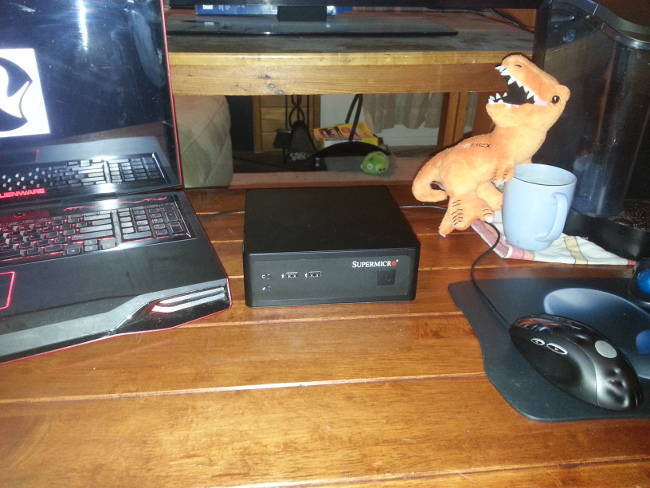
Aww ... it wants to be a server when it grows up
Supermicro's implementation of the Centerton Atoms strikes me as a great example of this category of server "done right". Supermicro slapped an IPMI module onto the motherboard; the idea of an ultra-low-power mini-ITX miniserver with full lights-out management makes me happy.
The board has two Intel network interfaces and four SATA3 ports which to my mind gives it all manner of uses. Put your favourite Linux distro on there and it makes a fine router; it will cheerfully handle a full 100Mbit of traffic while doing some reasonably intensive deep packet inspection.
The X9SBAA-F is a great file server for spinning rust, but you are emphatically not going to software RAID5 four Intel 520 480GB flash drives. The CPU isn't fast enough to do that without costing you speed. Still, if you're looking for the basis of your next home network storage box, look no further: this is the motherboard you're looking for.
I also like this board as a light-duty endpoint. The case I got it in has VESA mounting brackets and it is a perfect thin client, web browsing box and moderate-use office system.
As a server I find it wholly adequate for all my webserving needs. Granted, I don't run Facebook out of my living room, but it handled several thousand simultaneous hits to my website without complaint and flung the email to and fro like a champ.
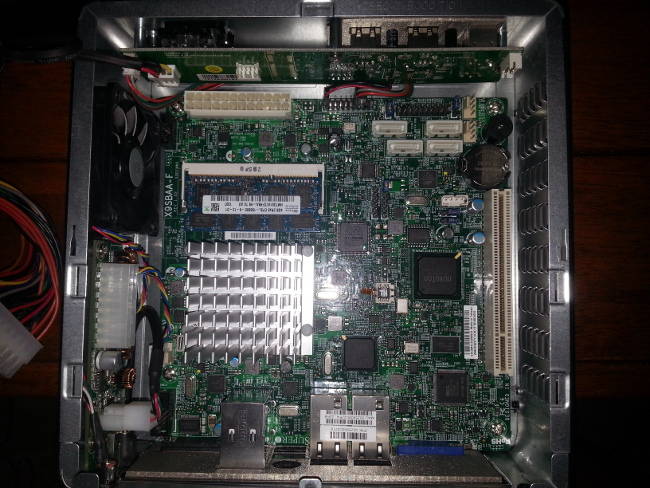
At this size even SO-DIMMs look big
Supermicro has gone the extra mile with its X9SBAA-F design; with thermals to 60°C and IPMI (with a dedicated NIC), this is exactly the sort of board you want to build into an "install and forget" appliance. It won't drink much power and after you forget where it physically is, and you can get in below the OS level to do whatever maintenance you need.
Conclusion
The Centerton Atom can take up to 8GB of RAM and it supports hardware virtualisation. It is the lowest-power (certainly lowest idle power) fully virtualisation-capable x86 server you are going to be able to get for some time.
There's an awful lot of computing that we do which doesn't need the horsepower of our top-end chips. We have many things that that sit around idle and only wake up once every now and again to do a little bit of work before idling some more.
We simply don't need big, beefy Core systems to do this kind of work and that is where the Centerton Atoms shine. Supermicro did yeoman's work on its initial Centerton offering, but I find myself eager to see what more can be done with these units. Consider something like its Microcloud - 12 systems in 3U, but each system is an E3 Xeon with up to a 69W CPU!
How many Centerton Atoms could be crammed into that same space? It would make dedicated servers a lot easier. It would also let me get around some of Microsoft's ridiculous VDI licensing restrictions by providing service from dedicated hardware that was "good enough". I want SeaMicro-like devices made out of these Atoms. I suspect that the innovation around these low-idle-servers has only just begun. ®
* I was contacted by Supermicro and informed that the system as a whole is rated only to 40 degrees Celsius despite what is listed on the page for the motherboard itself.
